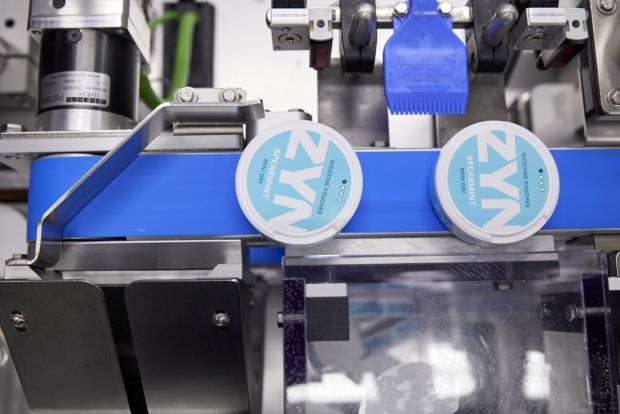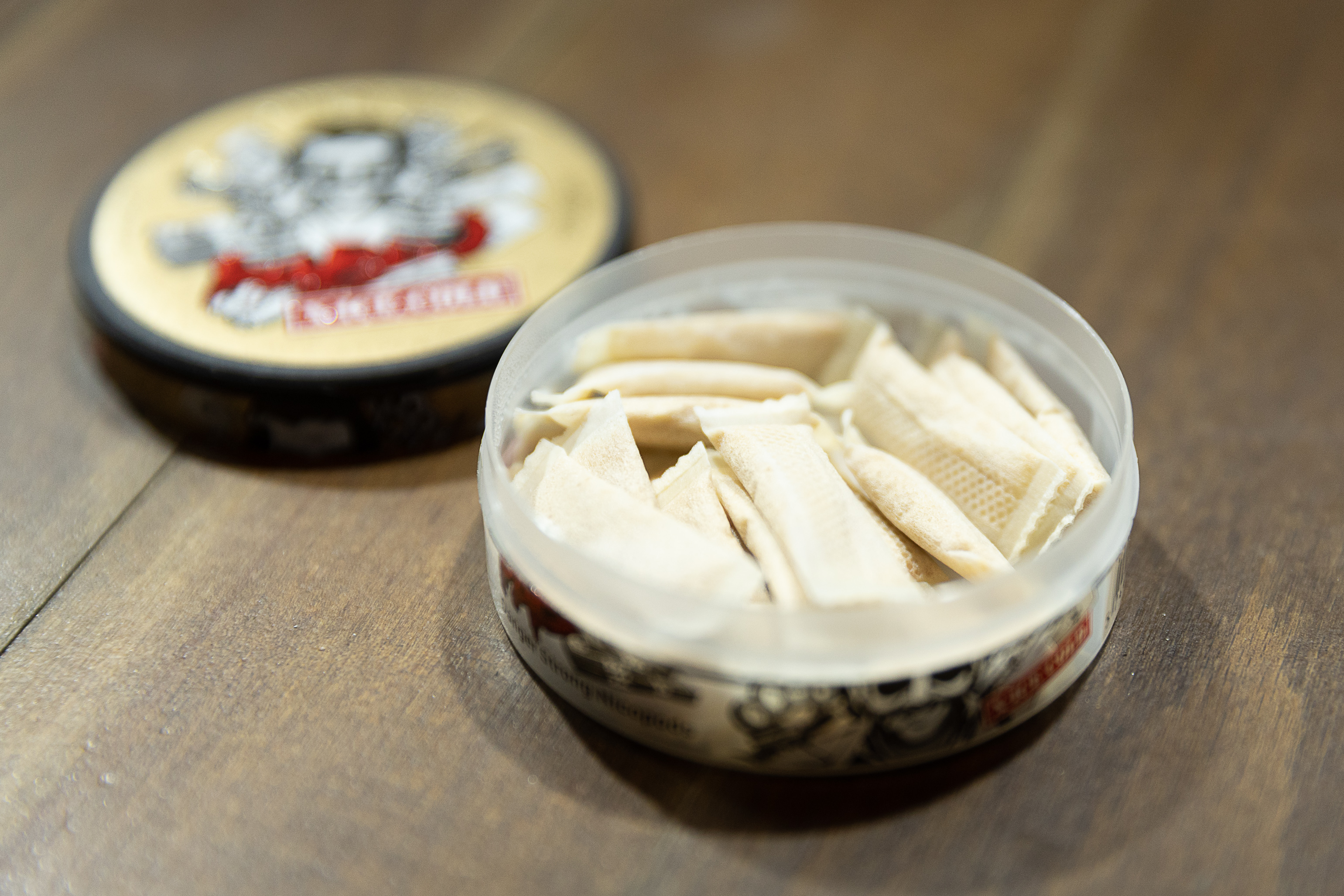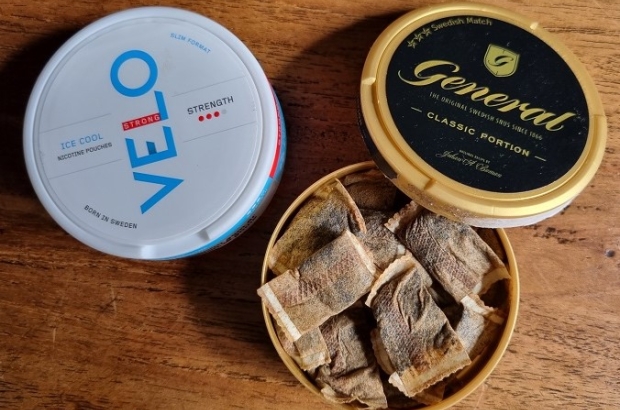- Daily & Weekly newsletters
- Buy & download The Bulletin
- Comment on our articles
Nicotine pouch ban: Swedish experience raises questions about benefits of alternatives
Belgium’s decision to ban the sale of nicotine pouches from 1 October 2023 aims to protect the health of children and young people, says federal health minister Frank Vandenbroucke.
The products in question – unfamiliar to many in Belgium – are small flavoured pouches that are placed between the lip and gum for a release of nicotine.
Vandenbroucke set out his opposition this year, fearing the pouches would be a stepping stone for youngsters to start smoking at an earlier age. “If you are fully committed to a tobacco-free generation, you must ensure that young people come into less contact with smoking or anything related to it,” he said.
Another motivation to clamp down is to discourage users switching to snus, the traditional moist tobacco product that’s an intrinsic part of Swedish culture. It’s packaged in teabag-like sachets that are placed under the top lip to deliver a nicotine rush.
As snus is banned in the rest of the EU, and has never been available on the Belgian market, there’s a negligible risk of its use increasing, says Pouchforum, a site run by the Nordic Nicotine Pouches Alliance. It has criticised the decision to ban pouches, saying: “It will deny millions of Belgian smokers a less harmful way of consuming nicotine.”
This sentiment has been echoed by experts from the Mediterranean Observatory on Harm Reduction (MOHRE), which believes the Belgian ban will make it more difficult for the country to achieve its smoke-free goals. In an open letter to the health ministry, it says. “We believe this will be a setback for smokers who are looking for a viable alternative to cigarettes but who may not be able to stop using nicotine completely.”
Encouraging the government to take advantage of lower risk products, it adds: “We believe harm reduction is vital to tackle tobacco-related morbidity and mortality in Belgium, particularly amongst the more vulnerable smoker groups.”
Sweden set to become first smoke-free country
In Sweden, switching from cigarettes to oral tobacco has helped the country achieve the lowest rate of tobacco-related disease in Europe. This is backed by more than 30 years of research proving the health benefits of snus compared to cigarettes.
With the lowest smoking prevalence in Europe (5.6%) in 2022 – the average is 23% – Sweden is on target to officially become the first smoke-free country in the world in 2023, meaning less than 5% of the population are smokers. It would also be the first country in Europe to reach the EU goal of eradicating cigarettes by 2040.
As a result, cancer-related deaths in Sweden are 38% lower than the EU average. The country’s success in reducing cigarette use and its public health burden is a result of a raft of harm reduction policies, including a more lax approach to taxing alternative products.

Snus tradition
Although consumed in Scandinavia since the mid-19th century, snus – a particularly male habit popularised by farm and factory workers – returned to fashion in the 1970s amid awareness of the dangers of smoking.
This was a trigger for people to stop smoking or find alternatives that could deliver nicotine and still be enjoyed socially, as snus can be consumed in public places. Its renewed popularity was down to a “people’s movement”, as consumers didn’t want to give up smoking or nicotine, says Patrik Hildingsson, vice-president of communication and public affairs at Swedish Match, a leading manufacturer founded in 2015.
As well as Scandinavia, the company’s largest markets are in North America, thanks to its original introduction by Swedish immigrants. Today its products include nicotine pouch brand Zyn. The non-tobacco, fibre-based range has been a huge success and helped persuade smokers to switch, Hildingsson says.
Sweden has the lowest rate of lung cancer among men in the EU, with snus remaining largely a male preference. “With new nicotine pouches, we are able to offer smoking alternatives to women,” says Hildingsson, a snus user himself. As for the future, he hopes that logic, rationale and science will prevail. “We Swedes have been too shy to export one of the best-kept secrets of the world.”

Medical side-effects
Smokeless tobacco products like snus almost completely avoid the release of toxic chemicals related to the combustion of cigarettes, but their nicotine content requires moderation and caution. For Dr Anders Milton, president of the Snus Commission, the health implications are stark: “None of the products linked to tobacco are free of harm, but with cigarettes you die, with their alternatives you do not.” Snus is not a health product, with higher blood pressure among its risks. “You also shouldn’t use it when pregnant, as it will lead to smaller foetuses,” he says.
For his colleague, tobacco control expert Professor Karl Fagerström, “pure nicotine is relatively close to caffeine and certainly much less harmful than alcohol”. Even coffee would be harmful if you smoked it, he points out. As to why the World Health Organisation takes a strict stance on all tobacco-related products, Fagerström says it believes alternative products discourage smokers from quitting.
New oral tobacco products were banned by the EU in 1992, but Sweden obtained an opt-out when it joined the EU in 1994. The health concern at the time was the possible correlation between snus and mouth cancer. Since then, scientific studies have proved that there’s no increased risk.

How to regulate alternative products
This latest bill fits into Belgium’s cautionary approach to alternative tobacco products, while maintaining conventional tobacco control policies such as taxation and pricing.
But calling on governments to look closer at the Swedish model is Tommaso Di Giovanni, vice-president communications of Philip Morris International (PMI). The tobacco giant acquired Swedish Match in 2022 as part of its ambition to cut its dependence on cigarettes and boost its alternative products.
“This country should teach us a lesson, the past can’t be changed, but we can take a different look at products coming onto the market and in future avoid the mistakes some countries made to excessively restrict or ban them,” he says.
With 1 billion smokers and rising worldwide, the challenge for the sector is reducing the time between invention and adoption, he says. “How many lives can be saved by these products?”
Photos: Swedish nicotine pouches and snus; history of tobacco production at Snus and Match museum, Stockholm; production of nicotine pouches at Swedish Match ©Peter Knutson; nicotine pouches ©Belga/James Arthur Gekiere
This coverage is supported by PMI. This support enables the Bulletin to devote additional editorial resources to cover the topic more widely and deeply. The Bulletin’s editorial content is independent of its supporters.









